#alibata
Video
Any VALORANT players among my followers?
I’m not much of a fanart person, but I knew I had to make one of Neon depicting her in her hometown Manila. As you probably already know, cultural representation is very important to me, which is why I’m glad that Neon was added into the game (even if I’m not a Duelist player).
This is not only fanart for a video game, but also an expression of Filipino cultural art. How much of Manila’s architecture and other local details can you recognize?
Play it - it’s a looping animation!
(Baybayin fonts designed by Aaron Amar, Lloyd Zapanta, and myself)
#valorant#fanart#neon#video game#manila#philippines#pinoy art#pinoy culture#filipino art#Filipino Culture#filipino#baybayin#alibata#valorant art#valorant fanart#valorant neon#neon valorant#architecture#digital art#3d animation#3d art#gaming#pilipinas#animation
418 notes
·
View notes
Text
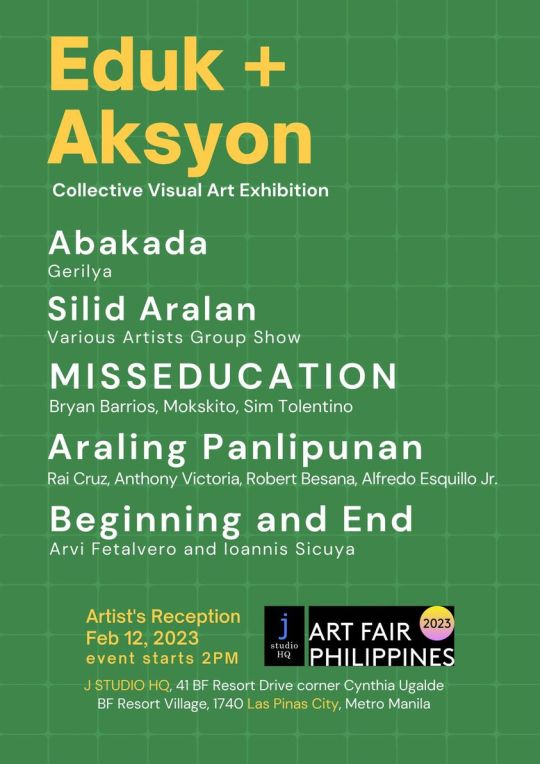


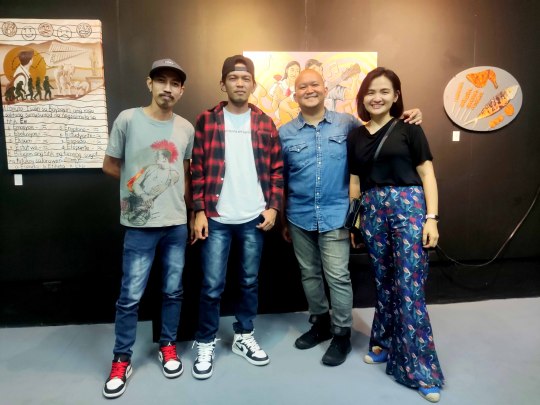
Eduk + Aksyon , Collective Visual Art Exhibit
Feb 12, 2023
As part of Art Fair Philippines 2023 Gallery Weekend
J Studio HQ Las Piñas will host a collective exhibition of multi-disciplinary contemporary artists, entitled Eduk + Askyon.
It is composed of 5 parts.
Silid Aralan Group Exhibition,
ABAKADA by Ang Gerilya,
MISSEDUCATION by Sim Tolentino, Bryan Barrios, Moks Skito
Araling Panlipunan Installation by Rai, Alfredo Esquillo, Jr., Robert Besana, Anthony Victoria
Beginning and End by Arvi Fetalvero and Ioannis Sicuya
The shows presented here reflect the cultural and societal issues of our time, and the value of education is the central theme in the works of the participating artists. From exploring the intersection of Art and Education in institutional settings, to the role of self- education and the democratization of knowledge through technology, these artists use their work to challenge traditional notions of what it means to be educated and to question the structures of how education shapes our immediate environment.
The shows featured here use a variety of media to engage with this theme. Some artists use their work to highlight the inequalities and lack of access to education that still exist, while others examine the ways we think about ourselves and our place in society.
Whether through their critiques of formal educational institutions or their exploration of alternative forms of learning, these artists demonstrate the ongoing relevance of education in our lives and vital role it plays in shaping our understanding of the world around us. The various shows exhibited here provide a unique opportunity to reflect, question and discuss the value of education and its relation to the viewpoint revolving us.
---
J STUDIO HQ Building is located at
41 BF Resort Drive Corner
Cynthia Ugalde Street, BF Resort Village,
1740 Las Piñas City.
2 notes
·
View notes
Text
Into Nothingness / Sa Kawalan
Writer’s note: this is from an ancient Filipino alphabet, Alibata. It means “kawalan” or nothingness in English. Here goes…
I want to journey into nothingness
Find the fire, the spark amidst this madness
Breathing a new life, giving a meaning
To this mind and heart that’s been hibernating
I will float and drift into nothingness
Then flow with the current of the endless
Taking away all my doubts…

View On WordPress
#alibata#apoy#fire#journey#journey to nowhere#kawalan#lampangmanunulat#lampangwriter#lost#nothingness#passion#peace#poem#poetry#rhymes#tattoo#tugma#tula
0 notes
Text
ᜃᜋᜓᜐ᜔ᜆ?
ᜀᜃᜓ ᜅ ᜉᜎ ᜐᜒ ᜀᜈ᜔ᜇ᜔ᜌᜒᜎᜒᜃ. ☺️
ᜈᜁᜐ᜔ ᜃᜓ ᜐᜈᜅ᜔ ᜐᜓᜋᜓᜎᜆ᜔ ᜄᜋᜒᜆ᜔ ᜀᜅ᜔ ᜊᜌ᜔ᜊᜌᜒᜈ᜔.
0 notes
Photo

#alibatatattoo #alibata #padayon #padayon #atektattoo #citattoostudio #salamatpoama🙏 (at Citattoo Studio) https://www.instagram.com/p/Clos-nzv9lb/?igshid=NGJjMDIxMWI=
0 notes
Text

wrote Sweet Cap'n Cakes in Baybayin
#[records]#baybayin or also formerly known as alibata was an old philippine script Filipinos used to write before the spanish colonization#i actually had fun with this. i should use it on my projects for fun
4 notes
·
View notes
Text
Rottmnt doodle dump

I had fun doing this. Might post more who knows
#digital art#rise of the tmnt#rottmnt#save rise of the teenage mutant ninja turtles#rise of the tmnt fanart#fanart#Anyways to all alibata readers I wish you lck#luc#LUCK#Man using an onscreen keyboard is not that fun#anyways haha bye
5 notes
·
View notes
Text
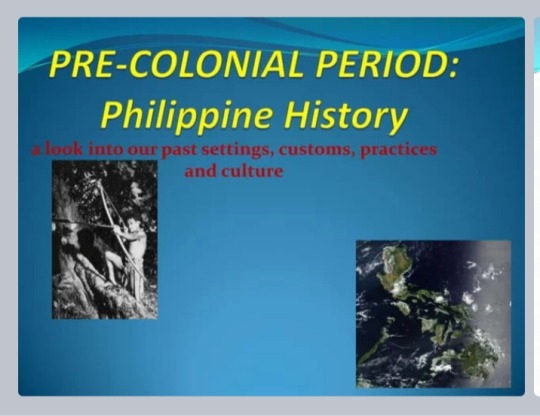
The cultural achievement of pre-colonial Philippine include those covered by prehistory and early history of the Philippines archipelago and it's inhabitants, which are the indigenous forebears of today's Filipino people.
These early Filipinos possessed a culture and technology that were quite advanced considering the timeline of history of science when it flourished. Waves of migrants who came to settle in the islands contributed to the development of an ancient Philippine civilization. Prehistoric aborigines, a cross of Afro-Asiatic and Austro Aborigines,now called Negritos(Aeta,Agta,Ayta) reached the islands by way of land bridges around 15,000 to 30,000 BC,and they were excellent hunters and food gatherer.In it's midst,other ancient civilizations were also thriving and evolving.The Proto-Malays,a Mongol-Asiatic race, arrived around 2500 BC using oceanic vessels called balangays,and they brought with them their knowledge in seafaring, farming, building of houses from trees and creation of fire for cooking.The next to arrive were the Duetero-Malays ,of India-Asiatic race (Indian, Chinese, Siamese, Arabic),that prevailed with a more superior and advanced culture.They possessed their own systems of writing, knowledge and skills in agriculture, metallurgy, jewelry -making as well as boat -building .When the Spaniards came to the islands in the 15th century, industries such as mining, agricultural, fishing and pottery were already in place and contacts with other Asian nations had been long established.
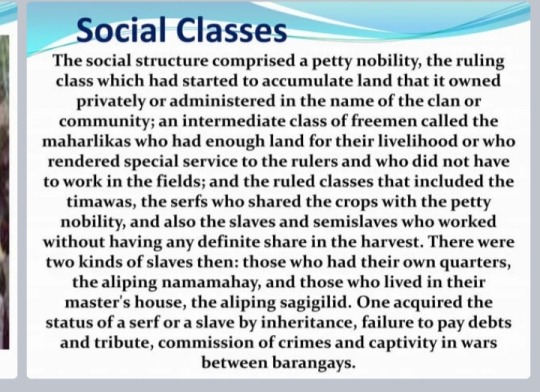


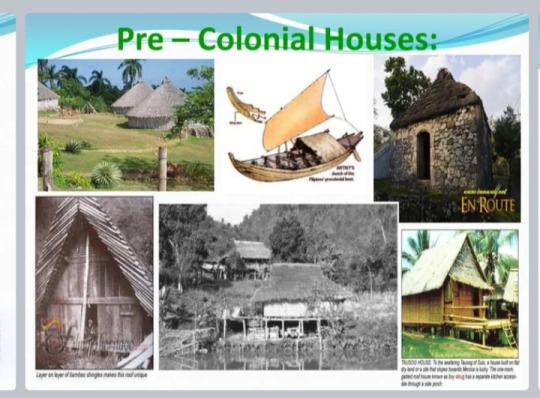
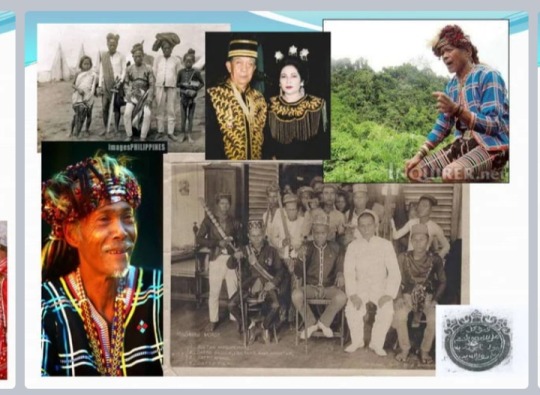

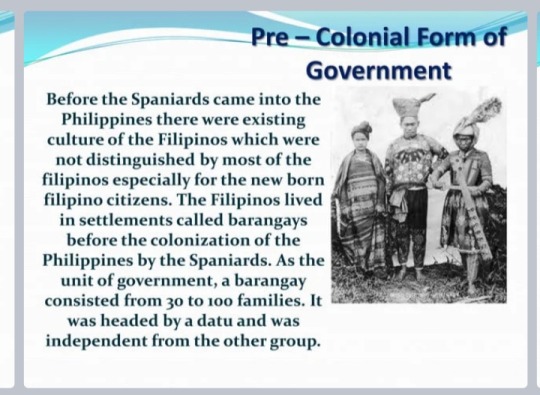
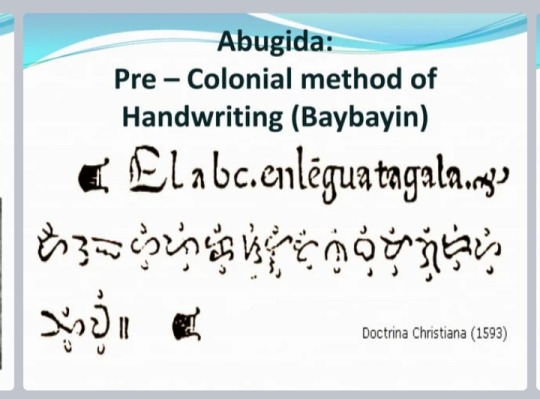

PRE-COLONIAL WRITING SYSTEMS
During the early period almost everyone in the society -male or female knows how to read and write. They have their own method of writing which they use sharp pointed tools,leaves,bamboo and trunk's skin. They write from top to button and read it from left to right. Accordingly they have their Alibata which scrip different from China, Japan and India.
This account was told by one of the first Spanish missionaries who came in the Philippines, Fr. Pedro Chirino.
PRE COLONIAL CLOTHING
The Visayan men wore a jacket with a Moorish style rob, that reach down their feet and was embroidered in beautiful colours.
Tagalog and Visayan men bound their temples and forehead with a "putong"
(a narrow strips of clothe).
They also wore jewelry and other accessories their bodies.
During this pre-colonial era historians found out that the "barong tagalog" (dress of the tagalog). Already existed. The earliest Baro ng tagalog was worn by the native Ma-I (the Philippines name before) just before they were colonized by the Spaniards.
The men wore the sleeve-doublet made of Canga (rough cotton) that reached slightly below the waist. It is color less with the front opening.
Their loins covered with a pane that hung between the legs and midthigh. The women also wore the sleeve dress but shorter than the men. They also were pane attached to the waist and riching to the feet accented by a colourful belt. The materials used for their dress is of fine line or Indian Muslin.
PRE-COLONIAL CULTURE
Other also worship the moon,stars,caves, mountains, rivers, plants and trees. Some creatures are being worship too. Like the bird,crow,tortoise, crocodiles and other things. They believed has value and connected to their lives. Then the variations of animistic practices occurs in different Ethnic groups. Magic,chants and prayers are often key features. Its practitioners highly respected (and some feared) in the community, as they were healers, midwife (hilot), shamans, witches and warlocks (mangkukulam), babaylans, tribal historians and wizened elders that provided the spiritual and traditional life of the community. In the Visayas region there is a belief of witchcraft (kulam) mythical creatures like aswang, Nuno sa punso and other mythical creatures.
PRE-COLONIAL CULTURE
these spirit are said to be anito or diwata that they believed to be good and bad. The good spirits were considered as their relatives and the bad were believed to be their enemies. Some worship specific deities like Bahala a supreme god for the Tagalog, Lain or Abba for the Visayan, Ikasi of Zambal, gugurang for the people of bicol and Kabunian of Ilocano and ifugao. Aside from those supreme deities they also worship other gods like Idialo as god of farming, kalain of harvest,Balangay god of rainbow and Sidapa god of death.
PRE-COLONIAL CULTURE
during the pre-colonial culture time there was already indigenous spiritual traditions practices by the people in the Philippines. Generally, by lack of people terminology prehistoric. Beliefs and cultural mores anchored in the idea that the world is inhabited by the spirits and supernatural entities, both good and bad, and that respect be accorded to them through naturs worship this; sthey believed that their daily lives has connection of such beliefs.
PRE-COLONIAL CULTURE
During early periods thousand years ago, the early Filipinos were composed of different groups that came from different part of Asia. With different groups they form their own community, system education and religious belief.
They group into different communities composed of 50 too 2,000 individuals and they construct their shelters in different areas according to their lifestyle and source of living. Usually they were situated along seashores, streams rivers, forest, fertile land areas and even in caves.
In water area they look for fish, shells and pearls as their source of living. They also use boat and craft as their means of transportation for and easier travel and their goods for trade form one place to another. For those people located in land areas they cultivate the land and plant rice, bananas and crops. After the harvest they no longer use the area indeed they just move to another place with less grass and fine soil and abundant trees where they can start farming again. Perhaps, this gives an idea that the Philippines is very rich of resources for a bountiful leaving.
Peopling of the pre-colonial Philippines
The nigritos were early settlers but their appearance in the Philippines has not been reliably dated; and they were follow by speakers of the Malayo Polynesians languages, a branch of the Austronesian languages, who began to arrive in successive beginning about 4000 B.C.E displacing the earlier arrivals.
By 1000 B.C The inhabitants of the Philippines archipelago had developed into four distinct kind of peoples: tribal groups, such as the Aetas, Hanunoo,Ilongots and the Mangyan who depended on hunter- gathering and were concentrated in forest; warrior social ranking and ritualised warfare and roamed the plains; the petty plutocracy of the ifugao Condilleda highlanders, who occupied the mountain rangers of Luzon; and the harbor principalities of the estuarine civilizations that grea along rivers and seashores while participating in trans-island maritime trade.
Introduction: Pre-History
The cultural achievements of pre colonial Philippines include those cavered by prehistory and early history of the Philippines archipelago and it's inhabitants, which are the indigenous forebears of today's Filipino people.
These early Filipinos possessed a culture and technology that were quite advanced considering the timeline history of science when it flourished. Waves of migrants who came to settle in the islands contributed to the development of ancient Philippine civilization. Prehistoric aborigines, a cross of Afro-Asiatic and Austro Aborigines, now called Negritos (Aeta, Agta,Ayta) reached the islands by way of land bridge around 15,000 30,000 B.C and they were excellent hunters and food gatheres. In its midst, other ancient civilizations were also thriving and involving. The Proto-Malays, A Mongol-Asiatic race l, arrived around 2500 BC using oceanic vessels called balangays, and they brought with them thei knowledge in seafaring, farming, building of houses from trees and creation of fire for cooking. The next to arrive were the Duetero-Malays, of India-Asiatic race (Indian, Chinese, Siamese, Arabic) That prevailed with a more superior and advanced culture. They possessed their own systems of writing knowledge and skills in agriculture metallurgy jewelry -making as well as a boat building. When the Spaniards to the Island in the 15th century, industries such as mining agricultural, fishing and pottery were already in place and contacts with other Asian nations had been long established.
3 notes
·
View notes
Text
21st Century Literature
what's so special about 21st Century?
FYI, this is the greater middle class and relentless innovation in products and services. 21st century have high technology compare to other first periods.
In School, teachers' thought to students the different periods happened before 21st century. Now, we will discuss the first three periods.
A. Pre-Spanish Literature
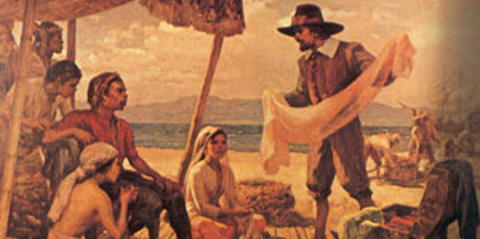
FOLKTALES
stories about life, adventure, love, horror, and humor where one can derive
lessons about life.
THE EPIC AGE
epics are long narrative poems in which a series of heroic achievements or
events, usually of a hero, are dealt with length.
FOLK SONGS
these are one of the oldest forms of Philippine literature that emerged in the
pre-Spanish period.
B. SPANISH LITERATURE
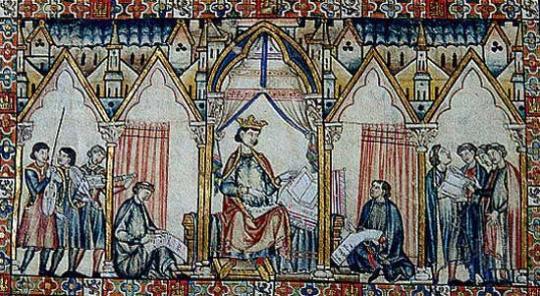
Spanish Influences on Philippine Literature
the First Filipino alphabet, called ALIBATA, was replaced by the Roman
Alphabet.
Folk Song
it manifests the artistic feelings of the Filipinos and shows their innate
appreciation for and love of beauty.
Recreational Plays
there are many recreational plays performed by Filipinos during the Spanish times.
C. PERIOD OF ENLIGHTENMENT

The Propaganda Movement (1872-1896)
this movement was spearheaded mostly by the intellectual middle-class like
Jose Rizal, Marcelo del Pilar, Graciano Lopez Jaena, Antonio Luna,
Mariano Ponce, Jose Ma. Panganiban, and Pedro Paterno.
Earth & Life Science
what's so special about knowing what our earth and bodies made of?
Earth science knowledge enables us to think globally and act locally— to make sound decisions about issues important in our lives as individuals and citizens.
In School, teachers' discussed the different body system of humans. Now, we will discuss three of the most important body systems.
A. RESPIRATORY SYSTEM

The lungs and respiratory system allow us to breathe. They bring oxygen into our bodies (called inspiration, or inhalation) and send carbon dioxide out (called expiration, or exhalation).
B. DIGESTIVE SYSTEM
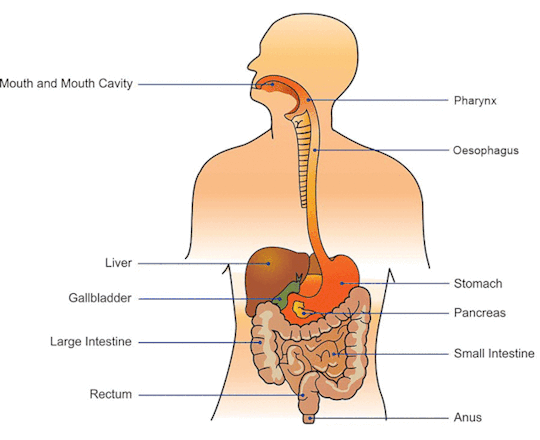
The digestive system breaks down food into nutrients such as carbohydrates, fats and proteins.
C. NERVOUS SYSTEM

The nervous system includes the brain, spinal cord, and a complex network of nerves.
ORAL COMMUNICATION
what's oral communication?
Oral communication is the ability to transmit ideas from your brain to either one person or a group of people.
In School, the proper way of communication to others is what teachers' mostly teaches to the students. Now, we will discuss the barriers between communication of the sender and receiver.
A. PHYSICAL BARRIER

Physical barriers are structural obstacles in natural or manmade environments that prevent or block mobility (moving around in the environment) or access.
B. PSYCHOLOGICAL BARRIER
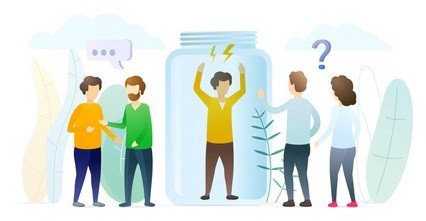
The ability to communicate and interact with one another in a rational frame of mind is also impacted by psychological impediments.
C. LINGUISTIC BARRIER

Linguistic barriers are simply obstacles that arise during language use.
D. CULTURAL BARRIER
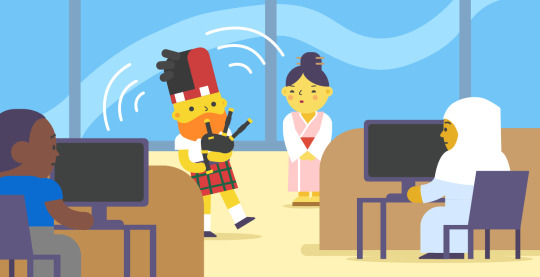
A cultural barrier is an issue arising from a misunderstanding of meaning, caused by cultural differences between sender and receiver.

4 notes
·
View notes
Text
Is the Philippines Patriarchal in the pre-Hispanic era?
Journal #1

During the pre-Hispanic period, the Philippines had a straightforward culture. Basic education was imparted, and it was taught using the Alibata or Baybayin alphabet. Regarding their living arrangements, they did so in small, dispersed communities known as balangays or barangays wherein, the construction of buildings like churches started.
Moreover, Pre-Hispanic women were valued; they could even hold prominent positions in communities as healers and priestesses, and they could even handle leadership positions and engage in combat as warriors. In line with these, a Datu's daughter can be one of the options for the line of heirs and heiresses. Women and men shared the same rights and were treated equally. Women possessed the ability to inherit property and played significant roles in trade and business. To trade with the market, other tribes, and foreign merchants like the Chinese, they would weave, produce pottery, and make jewelry, for the reason that men were forbidden from bartering unless their wives gave their consent, they had influence over how transactions were carried out.
With that being said, I believe that the pre-Hispanic Philippines was not patriarchal since Filipino women had the freedom to make their own decisions and had influence over their way of life. They had the same status as males, were respected for their intelligence and wisdom, and had access to human rights.
References:
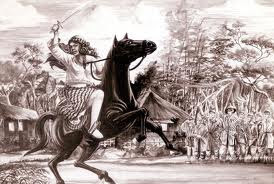
http://www.helium.com/items/605525-the-role-of-women-before-european-occupation-of-
2 notes
·
View notes
Text
Gloomy
Song of the day: Kiss Me – Sixpence None The Richer
Another day at school, today I’m actually quite nervous because we were asked to present our progress on our Bible month presentation. Our progress is little to none, and guess what most of our classmates are missing today. We basically just finalized our concept today and now we're hoping everyone pulled it together and was able to memorize at least a few verses of the Bible chapter we were assigned to memorize. Anyway, another problem I have faced today is our quiz in our komunikasyon subject, our teacher told us to familiarize ourselves with Alibata which is the alphabet used in the pre-colonial period of the Philippines. It was actually quite difficult to get used to since the symbols hold no similarities to the modern-day letters. Luckily, I studied enough and was able to survive.
I also want to talk about how gloomy it is today; the weather was pretty good for the past few days, and all of a sudden it is so dark and cloudy. I do not know if another typhoon is coming, but the weather patterns are very odd. But as for me, I actually like rain; it is so relaxing for me. The sound of the raindrops really put me at ease, there is a feature on my phone where you can put background sounds anytime you want. So whenever I listen to music, I put rain mode on. I do this every night before I go to bed and it’s really effective when you can’t fall asleep. Enough of my blabbering about the rain; that was actually all I did today, now it’s time to sign off and just relax.

0 notes
Text
MODULE 2 [2/2]
Learning Objective: To better appreciate history
Perhaps one of the reasons why students often find history boring is that at times, teachers use assessments that don't usually align well with the course content. This makes assessment not only exhausting but also seem pointless to students. That's why it's crucial for us, for history teachers, to revisit one of the core course goals of history – to foster an appreciation of history among the students.
Brissenden and Slater (n.d.) exclaims that, "If your students aren't high jumpers, maybe it's because you aren't asking them to high jump." This emphasizes the importance of using appropriate assessment techniques that encourage students to strive higher, to jump higher.
When it comes to teaching history, it's essential for history teachers to minimize biases and distortions in their narratives. In the same manner, History teachers must stay updated, especially given the continuous emergence of new discoveries. By doing so, educators can ensure the validity and reliability of their assessments to enable them to share accurate and updated historical knowledge with their students.
For instance, it's no longer accurate to refer to "Tabon Man" as the oldest human ancestor found in the Philippines. Recent findings, such as the discovery of Homo luzonensis in 2016, reveal an even older lineage. Similarly, it's important to correct misconceptions, such as Alibata being the name of the Philippine writing system, when it is actually known as Baybayin.
In the field of history, positive revisionism is an integral part of the discipline. To ensure the best possible learning experience for students, it's a must to follow the assessment cycle (plan-do-check-act).
If a significant number of your students find history to be a dull subject, it's time to consider revising your learning objectives, teaching instructions, and assessments. By following the assessment cycle, you can create a more engaging and effective history education experience for your students.
So say yes to #PositiveRevisionism, no to #NegativeRevisionism!
0 notes
Photo

Puhon – BAYBAYIN / ALIBATA Word Tattoo Time Lapse
Thank you for watching my video, I hope you like and subscribe my channel.
Follow and Message Facebook Page: Instagram: Artist Facebook/ Instagram:
https://dopetattoo.com/2022/08/25/puhon-baybayin-alibata-word-tattoo-time-lapse/
0 notes
Text
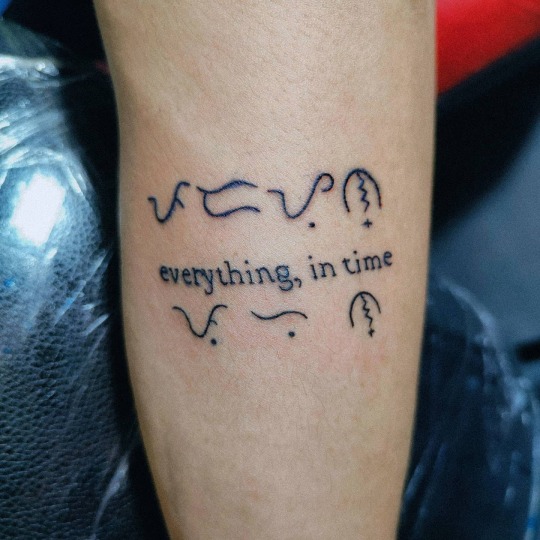

In God's will 🙏🏼
7 notes
·
View notes
Photo

#minimaltattoo #alibatatattoo #alibata #baybayintattoo #baybayin #atektattoo #citattoostudio #salamatpoama🙏 (at Citattoo Studio) https://www.instagram.com/p/ChrssrQPlKg/?igshid=NGJjMDIxMWI=
#minimaltattoo#alibatatattoo#alibata#baybayintattoo#baybayin#atektattoo#citattoostudio#salamatpoama🙏
0 notes
Photo

New fonts now available at https://kaloygdapiti.gumroad.com/ Easy way to learn baybayin, it adds the kudlit as you type! #mabuhay #microsoftword #ipadpro Compatible with iOS and PC. Can be used in Adobe, Microsoft, Sketch and also as a webfont. #filipinoscript #syllabary #abugida #alibata #babayin #badlit #visayan #pinoy #kabayan #filam #amboy #filipinoamerican #californian #kaloygdapiti #caloy #calligraphy #graffiti https://www.instagram.com/p/CSLhcHKrrcn/?utm_medium=tumblr
#mabuhay#microsoftword#ipadpro#filipinoscript#syllabary#abugida#alibata#babayin#badlit#visayan#pinoy#kabayan#filam#amboy#filipinoamerican#californian#kaloygdapiti#caloy#calligraphy#graffiti
5 notes
·
View notes